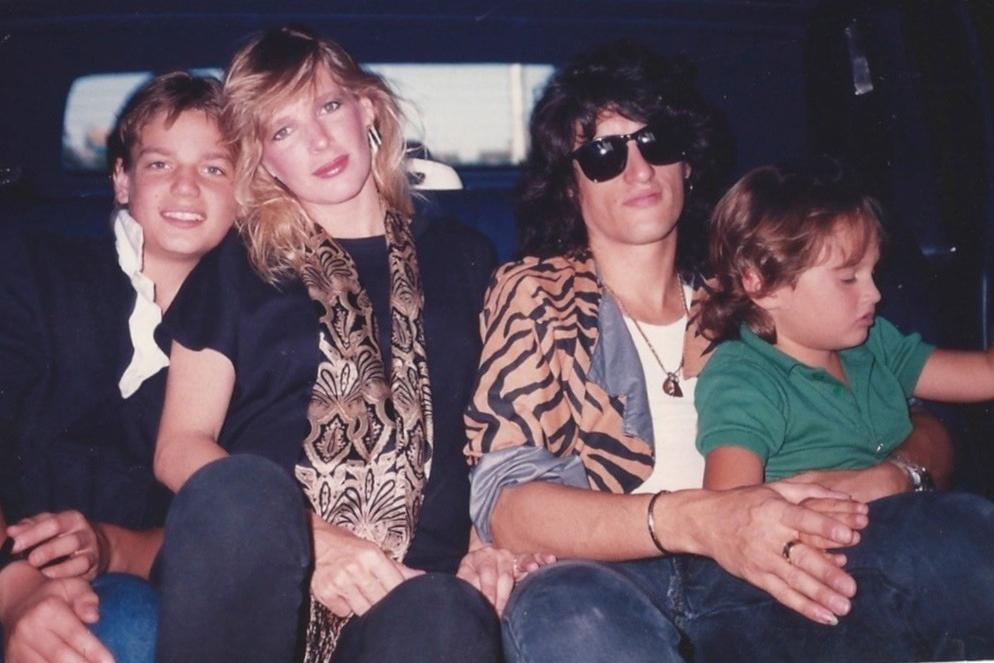
Aerosmith guitar legend Joe Perry has had many muses in his life — alcohol, cocaine, charismatic Aerosmith frontman Steven Tyler — but only one thing has stayed true and never let him down: the music. “When it’s done right, it’s like having a movie in your ears,” he explains. “The whole thing about sound just fascinates me.”
In his best-selling autobiography, Rocks: My Life in and Out of Aerosmith (Simon & Schuster), Perry pulls no punches when discussing his struggles with addiction, taking the long road to sobriety on a hard trail riddled with relapses, and his many personal and professional conflicts with his forever bandmate Tyler. But he also discusses at length his lifelong pursuit of sonic excellence and how best to capture it in the studio, as well as be able to convey it onstage. Recently, Perry, 64, called Digital Trends to delve into the roots of his obsession with sound, the best moments on the last two Aerosmith albums, and what he did when he met Neil Young. The man is back in the saddle again — not as if he ever really left it.
“I don’t think about it so much as being an author but as being an adventurer.”
Joe Perry: I guess so. (both laugh) The first time my wife called me that, I didn’t even turn my head. But it’s on there now — they actually put it on the cover. Wow.
Growing up as a student who struggled with undiagnosed ADHD, I bet you never thought that would happen, huh?
Not at all. I bet it’s gotta be difficult when you write a real book, like a historical novel, since it comes from a different place. But with an autobiography, people are actually buying your life story, hoping to find out something about you they don’t know. That part of it is a little scary, and a little daunting.
I don’t think about it so much as being an author but as being an adventurer living this life that I never thought would happen, and finding out people are interested in reading about it. I hope I put it all down in a way that makes sense. The feedback I’m getting is, I guess it worked. (chuckles)

I think it did too. It really comes across in your voice. I also like that one of the early chapters in the book is titled Sounds [Chapter 2 in Part I, Gestation], because that’s clearly a concept important to you as a person, not only as a musician. My favorite quote in the book is on page 132, where you say, “The exploration of sound is endlessly fascinating to me.” Why is that? Why do you think sound has been so important to you in your life?
I think it’s because it can have such a direct link to the subconscious, and how you can affect people with it — that is, affect them with noises, frequencies, and melodies. I’m sure that painters feel the same way about color and light — all of the elements of what your eyes see, and not necessarily just in a painting, but shapes too. Painting — they live and breathe doing that. To me, sound has a similar impact.
“There are certain things you can do with sound to create feelings and emotions in people.”
We should also add the word quality after sound, because there are certain characteristics that you as an artist want to get across, right?
Yeah. And it depends on what you’re looking to do with it. There are certain things you can do with sound to create feelings and emotions in people. You can see it in their eyes — you can get them on their feet dancing, you can get them in a sexual frenzy, you can calm them down, you can make it so nobody, or everybody, hears a pin drop. You can do all that with sound.
But the main thing is taking a song down to its elements and using them to create a feeling, whether it’s a sentimental thing or it’s a rock song and you want to get up and get everybody going. Or, in the case of an Aerosmith show, we just want to entertain people for two hours, you know?
Oh yeah, I know. A couple of years ago, you and I discussed high-resolution audio and the surround-sound mix done for your self-titled solo record, Joe Perry (2005). Now I’m curious to get your feelings about high-res 96/24 downloads. Are you encouraged that people can hear more of the details in your recorded work in that way?
“You can get them on their feet dancing, you can get them in a sexual frenzy, you can calm them down…”
But a lot of times, there’s a really strong industry push to make something new for people to hear what they want them to hear. When CDs came out, they were harsh, and you didn’t have so many gigs to work with to create all the sounds. And then it developed past the point where it mattered, because it all got squeezed down to earbuds and MP3s, for the most part. But because the whole way people get music now has spread out and people can listen to it by reproducing it in so many different ways — it’s kind of leveled the field. And it’s nice to see how many people love vinyl again. That’s a step in the right direction, even though it’s a step backwards about 50 years, you know?
But like I said, the CD sound is harsh. You can hear certain things you couldn’t hear on a record, but not always in a good way. I can almost never turn a CD up enough as loud as I like to hear rock and roll. In the early days, I’d listen to cassettes. I liked the sound of cassettes for some reason. But now, with all the software, you can manipulate a music file so that it sounds like it’s on tape.

The two most recent Aerosmith studio records — Honkin’ on Bobo (2004) and Music From Another Dimension! (2012) — both sound great to me digitally in 96/24. I often feel like I’m right in the room there with you guys when you were playing and recording.
Thanks. The bottom line is, you really just want to hear that captured feel of being in the room. Yeah, you can get that using a computer, but it’s much harder. It comes much more natural when you work on tape. And both of those records hit tape at least twice. Even though they were ultimately mixed on Pro Tools, we mixed down to a big fat 1-inch tape, and also we used [Endless Analog’s] CLASP system [which effectively combines the sonic benefits of tape with the flexibility of Pro Tools]. On Dimension!, everything went from the microphone to the tape machine, and then to the computer. That helped.
“When CDs came out, they were harsh.”
I have to think it’s one of the rock songs — and there are three on there you could have heard on Toys [in the Attic] (1975) or Rocks (1976), because they’re blues-based and recorded by the whole band being together in the room at the same time. “Legendary Child” is one. There are overdubs, but it’s all about the basic takes. They just have that vibe of being played live. [Producer] Jack Douglas — who we grew up with in the studio, in a metaphorical sense, learning how to make records — he went to engineering school and knows the why and wheres and how it all works. Jack knows how to take care of the sound so it feels like you’re there with the band.
Listening to Aerosmith in hi-res gives me the sense of you guys being there together looking at each other, and I can also hear the separation of instruments in the mix.
Great. That’s part of the skill and magic that Jack is instrumental in getting, no pun intended. And the proof in what he does comes through when you play it.
You’re still writing new material. How do you think you’ll release it in the future — singles, albums, downloads only …?
I’m right in the middle of putting some new stuff together and talking with the company as to how to put it out. I’m more concerned with how it’s going to turn out. I mean, I have ideas about certain songs and what to do with them. But putting out albums… (pauses) I’m just not sure.
“It’s nice to see how many people love vinyl again.”
Vinyl helps facilitate people thinking about songs as a group. But you do start to lose sound quality the more music you put on a vinyl album. You used to have, basically, 38 to 40 minutes total. Some of the best records I ever heard were only 20 to 25 minutes a side, which helped limit the number of songs put on there. That was a real positive thing, but everybody went wild with the CD, with too many songs. It was just too much.
Also, I think the best albums were better edited. Take Rocks and Toys in the Attic — they were just the right length with the right amount of music. Every song meant something.
Well, there you go. Those two are good examples of that. I also think of some of the early records I loved, that had maybe eight songs on them.
What were some of your favorite albums? John Mayall and the BluesBreakers (1966) had to be one of them.

That’s definitely one. The first Jeff Beck record, Truth (1968) — the sound of that record is amazing. I don’t think anybody’s equaled that sound, except maybe some of the Jimi Hendrix records, the ones he was alive for — you know, the original stuff. Some of it’s since been remixed and remastered and “re” this, and “re” that, but I still listen to my original copy of the Axis: Bold as Love record (1968) with all the cracks and all the scratches. It still has a warmth and a sound to it that I just don’t hear anywhere else.
I know you’ve met Neil Young. Did you discuss Pono with him?
Actually, no — I talked to him about his bus more than I talked to him about his music. (both laugh) I did get a chance to check out his rig, and I talked to his guitar tech. But his head’s in the right place when it comes to sound, I’ll tell ya.







